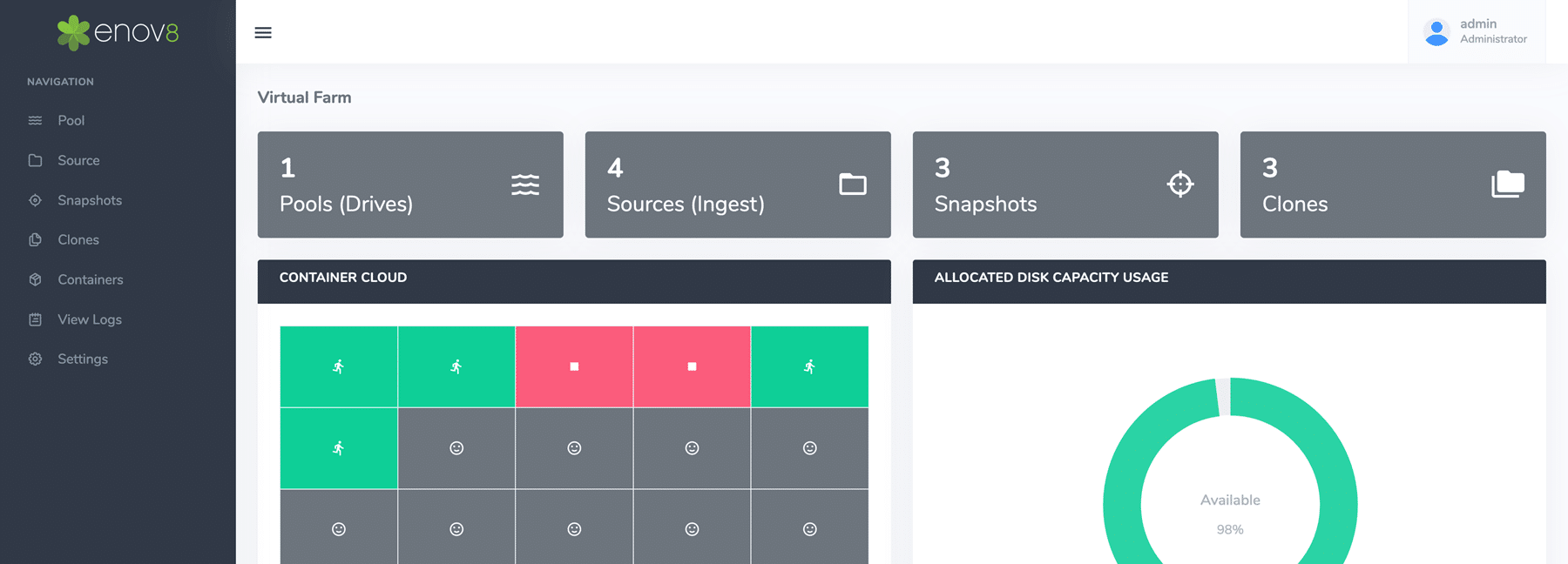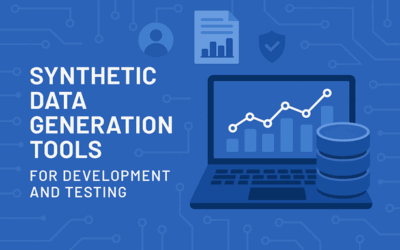
What is Data Friction – From the perspective of TDM
MAR, 2023
by Jane Temov.
Jane Temov is an IT Environments Evangelist at Enov8, specializing in IT and Test Environment Management, Test Data Management, Data Security, Disaster Recovery, Release Management, Service Resilience, Configuration Management, DevOps, and Infrastructure/Cloud Migration. Jane is passionate about helping organizations optimize their IT environments for maximum efficiency.
Test Data Management (TDM) refers to the processes and strategies used to manage the data used in software testing. Effective TDM practices are essential to ensure that software is thoroughly tested and that testing is performed efficiently.
Enov8 Test Data Manager
*aka ‘Data Compliance Suite’
The Data Securitization and Test Data Management platform. DevSecOps your Test Data & Privacy Risks.
However, the effective management of test data is often hindered by data friction. Data friction refers to the obstacles or resistance encountered when trying to access, integrate, or use test data effectively. In this post, we will explore the concept of data friction from the perspective of TDM and discuss strategies for overcoming data friction in the context of software testing.
Causes of Data Friction
There are several causes of data friction, including data silos, lack of standardization, poor data quality, and limited access to data.
Data silos
Data silos occur when data is stored in separate systems or departments, which makes it difficult to access and share data across the organization. This can lead to inconsistencies, errors, and delays when trying to integrate and analyze data.
Lack of standardization
A lack of standardization in data can make it difficult to integrate and analyze data. When data is inconsistent or not structured in a standard way, it can create challenges for data analysts trying to make sense of it.
Poor data quality
Poor data quality can result from a variety of factors, such as errors in data entry, outdated data, or incomplete data. Poor data quality can lead to inaccurate analysis, which can impact business decisions negatively.
Limited access to data
Limited access to data can create obstacles for effective data management. When data is not easily accessible to those who need it, it can lead to delays in decision-making and hinder the ability to make data-driven decisions.
Understanding the causes of data friction is critical to developing effective strategies for overcoming it. In the next section, we will explore the impacts of data friction on business operations.
Impacts of Data Friction
Data friction can have several negative impacts on business operations, including reduced efficiency and productivity, missed opportunities for insights, increased costs, and decreased data accuracy.
Reduced efficiency and productivity
Data friction can create inefficiencies in data management processes, leading to delays in decision-making and reduced productivity. When data is difficult to access or integrate, it can create bottlenecks in the data management process, slowing down business operations.
Missed opportunities for insights
Data friction can also result in missed opportunities for insights. When data is not integrated effectively or analyzed accurately, it can lead to incomplete or inaccurate insights. This can result in missed opportunities for identifying new trends or opportunities for growth.
Increased costs
Data friction can also increase costs for organizations. When data is not managed effectively, it can lead to duplication of efforts, inefficiencies in processes, and additional time and resources needed to clean and integrate data.
Decreased data accuracy
Poor data quality resulting from data friction can lead to decreased data accuracy. This can have significant impacts on business decisions, resulting in ineffective strategies and missed opportunities.
Understanding the impacts of data friction is critical to developing effective strategies for managing data effectively. In the next section, we will explore some strategies for overcoming data friction.
Strategies for Overcoming Data Friction
There are several strategies organizations can use to overcome data friction and manage data effectively. These include data integration, standardization of data, automation of data processes, improved data quality, and data provisioning through methods like data virtualization.
Data integration
Data integration involves combining data from different sources to create a unified view of data. This can help organizations break down data silos and create a more comprehensive understanding of their data. Data integration can be accomplished through several methods, such as using data integration tools or building data warehouses.
Standardization of data
Standardizing data involves creating a consistent structure and format for data across the organization. This can help ensure data is consistent, accurate, and easier to integrate and analyze. Standardization can be accomplished through the use of data standards, data models, and data governance practices.
Automation of data processes
Automating data processes can help organizations streamline data management processes and reduce the likelihood of errors. Automation can include processes such as data entry, data cleaning, and data analysis.
Improved data quality
Improving data quality involves implementing practices and processes that ensure data is accurate, complete, and up-to-date. This can include data validation, data profiling, and data cleansing practices.
Data provisioning through methods like data virtualization
Data provisioning involves making data available for use by various applications, tools, and teams. Data virtualization is a method of data provisioning that enables access to data without having to physically move or copy it. Tools like Enov8 VirtualizeMe enable data cloning and provisioning, making it easier for organizations to provide test data to software testing teams.
By implementing these strategies, organizations can overcome data friction and manage data effectively, leading to improved decision-making and increased business success.
Enov8 VirtualizeMe, Reduce That Data Friction: Screenshot
Conclusion
In this post, we examined the concept of data friction from the perspective of Test Data Management (TDM). Effective TDM practices are critical for managing the data used in software testing and ensuring that testing is performed efficiently.
We explored the causes of data friction in the context of TDM, such as data silos, lack of standardization, poor data quality, and limited access to data. We also discussed the impacts of data friction on software testing, including reduced efficiency and productivity, missed defects, increased costs, and decreased test coverage.
Finally, we discussed several strategies for overcoming data friction in the context of TDM, including data integration, standardization of data, automation of data processes, and improved data quality.
Looking to the future, effective TDM practices will continue to be essential for successful software testing. As data volumes and complexity continue to increase, organizations will need to develop new strategies for managing test data effectively and overcoming data friction.
Overall, by understanding data friction in the context of TDM and implementing effective TDM practices, organizations can improve their ability to manage test data effectively, identify defects, and achieve greater software quality.
Other TDM Reading
Enjoy what you read? Here are a few more TDM articles that you might find interesting.
Enov8 Blog: A DevOps approach to Test Data Management
Enov8 Blog: Why TDM is so Important!
Enov8 Blog: What is Data Fabrication in TDM?
Relevant Articles
7 Synthetic Data Generation Tools for Dev & Testing
In software development and testing, having access to high-quality, realistic data is crucial. But real production data is often sensitive, regulated, or simply unavailable for testing purposes. Synthetic data generation tools provide a powerful alternative, enabling...
The SAFe Hierarchy and Levels, Explained in Depth
The Scaled Agile Framework (SAFe) is a comprehensive set of principles and practices designed to help organizations adopt agile methods on an enterprise level. It provides a set of guidelines and best practices that enable large-scale product development with agility....
DORA Compliance – Why Data Resilience is the New Digital Battlefield
How Enov8 Helps Financial Institutions Align with the EU's Digital Operational Resilience Act Executive Introduction As of January 2025, the EU's Digital Operational Resilience Act (DORA) has become legally binding for financial institutions operating across the...
Data Fabric vs Data Mesh: Understanding the Differences
When evaluating modern data architecture strategies, two terms often come up: data fabric and data mesh. Both promise to help enterprises manage complex data environments more effectively, but they approach the problem in fundamentally different ways. So what’s...
What Is Release Management in ITIL? Guide and Best Practices
Managing enterprise software production at scale is no easy task. This is especially true in today’s complex and distributed environment where teams are spread out across multiple geographical areas. To maintain control over so many moving parts, IT leaders need to...
Test Environment: What It Is and Why You Need It
Software development is a complex process that requires meticulous attention to detail to ensure that the final product is reliable and of high quality. One of the most critical aspects of this process is testing, and having a dedicated test environment is essential...












